Dr. Gorter on a lecture tour through Northern China from December 25th, 2017 through January 5th, 2018
Prof. Robert Gorter was invited by Mrs. Shuzhi Wang who is the executive director of Orientech, a Chinese company with its headquarters in Dalian that offers medicines and medical equipment. Dalian is the second largest city of Liaoning province, after Shenyang, the provincial capital. Dalian City is governed by the Dalian Municipal People’s Government. Dalian is a major city and seaport in the south of Liaoning Province, China. It is the southernmost city of the Liaodong Peninsula. Dalian is the province’s largest city and has sub-provincial administrative status. The Shandong Peninsula lies southwest across the Bohai Strait and Korea lies across the Yellow Sea to the east.
Today, a financial, shipping, and logistics center for Northeast Asia, Dalian has a significant history of being used by foreign powers for its ports. However, the city was better known as Port Arthur.
In 2016, Dalian was ranked 48th in the Global Financial Centers Index, the other Chinese cities on the list being Hong Kong, Shanghai, Shenzhen, Beijing, and Qingdao. In 2016, Dalian ranked 42nd in the Global City Competitiveness Index. In 2006, Dalian was named China’s most livable city by China Daily, and still is.
In the 1880s, Jinzhou, the north of downtown within Dalian, now Jinzhou District, was a walled town and center for political intrigue and economic activity. The Qing government built bridges and heavily fortified the peninsula. Mining camps on the northern coast of Dalian Bay became the small town of Qingniwa or Qingniwaqiao, near what became downtown Dalian. The British occupied Qingniwa in 1858 but it returned to Chinese control in 1860. Port Arthur at the peninsula’s tip took its English name from Royal Navy Lieutenant William C. Arthur, but the Chinese called it Lüshun. Although China heavily fortified the area, in which it allowed trade with foreigners, Japan swiftly overcame those defenses in the First Sino-Japanese War, committing the Port Arthur massacre during the war in November 1894. In April 1895, China conceded defeat in the First Sino-Japanese War, ceding the Liaodong Peninsula, Taiwan, and Penghu, and making many other concessions in the Treaty of Shimonoseki.
The Triple Intervention by Russia, France, and Germany forced Japan to return the Liaodong Peninsula to China, despite the treaty’s terms; instead, the Russian Empire coerced a lease of the peninsula from the Qing Dynasty in 1898. For Russia, the region of the peninsula was of particular interest as one of the few areas in the region that had the potential to develop ice-free ports. The Russians built a modern commercial port city, which they wanted to become the Paris of the Far East, and called it Dal’niy (Russian: Дальний). Linked to the Trans-Siberian Railway’s branch line from Harbin, Dalniy became Russia’s primary port city in Asia and also served other Western traders. Russia signed the Pavlov Agreement (1898) with China, which granted Russia a 25-year lease on Dalian and Lüshun and exclusive right to lay a branch of the Chinese Eastern Railway—what would become the South Manchurian Railway. Russia spent more than 10 million golden rubles (equivalent to 11.5 billion of today’s rubles) building the new ice-free port city.
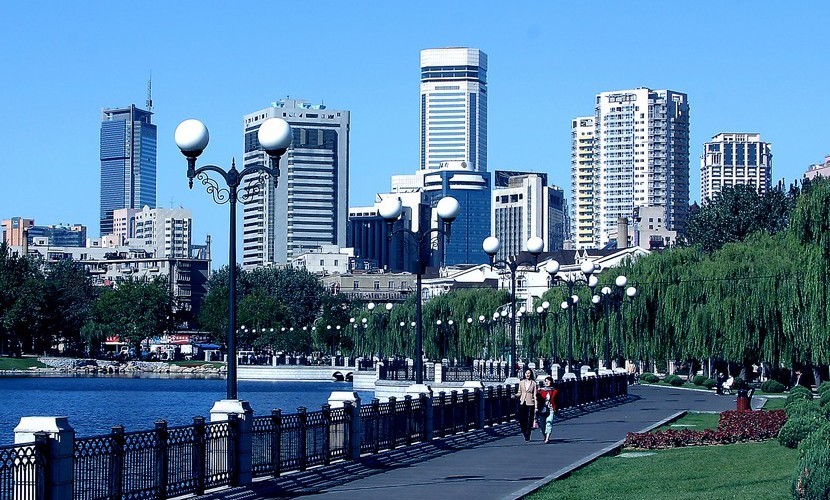
City view of Dalian
Russia heavily fortified Dalniy and the Port Arthur naval base (Lüshunkou) before and after the Boxer Rebellion. Missionaries and converts were killed in the peninsula during the insurrection, although the massive massacres of ethnic Chinese Christians including Metrophanes, and Chi Sung occurred at Harbin. Also, Western expeditionary forces suppressed the Boxers across the Yellow Sea in Shandong.
During the Russo-Japanese War, the peninsula became a major battleground. Major-General Baron Anatoly Stoessel defended the siege of Port Arthur, for five months, but the Japanese army managed to sink several Russian ships attempting to relieve him through long-distance fire in early December. Admiral Eugene Alexeyeff was blamed for splitting precious resources shipped 5,000 miles (8,047 km) across the single-tracked Trans-Siberian Railway and Manchurian Railway between Dalniy and Port Arthur. After the Japanese navy crippled the remaining Russian battleship Sevastopol in three weeks of constant attacks, and explosives detonated in tunnels that destroyed Port Arthur’s remaining defenses at year’s end, Russia surrendered the port on 2 January 1905.
The Treaty of Portsmouth ceded Port Arthur to Japan, which set up the Kwantung Leased Territory or Guangzhou (關東州), on roughly the southern half (Jinzhou District and south) of present-day Dalian. Japanese invested heavily in the region, which became the main trading port between Manchuria and Japan. Japan leased the area from Manchukuo after establishing the puppet state in 1932. In 1937, as the Second Sino-Japanese War began, Japan enlarged and modernized the trade zone as two cities: the northern Dairen (Dalian) and the southern Ryojun (Lüshun or Port Arthur).
One of the most heavily developed industrial areas of China, the Dalian municipal area today consists of Dalian proper and the smaller Lüshunkou (known in Western and Russian historic references as Port Arthur), about 75 km farther along the Liaodong Peninsula. Historical references note that the Russian-designed city of Dalniy (Alt. Dalney), on the south side of Dalian Bay was 40 km from Port Arthur/Lüshun (known today as Lüshunkou).
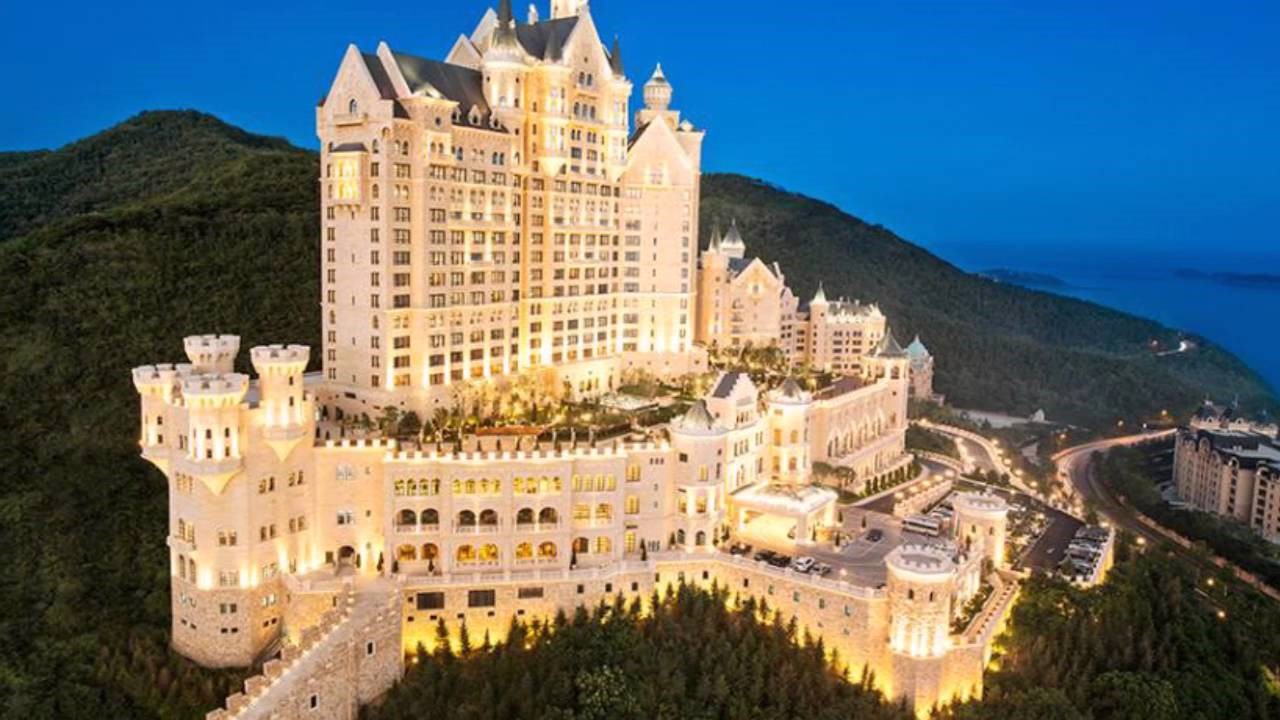
The Castle Hotel Dalian, China, where Prof. Gorter stayed for a few days
Dalian is located on Korea Bay north of the Yellow Sea and roughly in the middle of the Liaodong peninsula at its narrowest neck or isthmus. With a coastline of 1,900 km, it governs the majority of the Liaodong Peninsula and about 260 surrounding islands and reefs. It is seated at the south-south-west of the Yalu River, and its harbor entrance forms a sub-bay known as Dalian Bay.
December 26th, 218
Arrival in Dalian: Company visit and discussions
Dr. Gorter was very warmly greeted. They had a very good exchange of ideas and facts about various forms of hyperthermia and immunotherapies, including vaccination with dendritic cells and Cannabis sativa (THC and CBD).
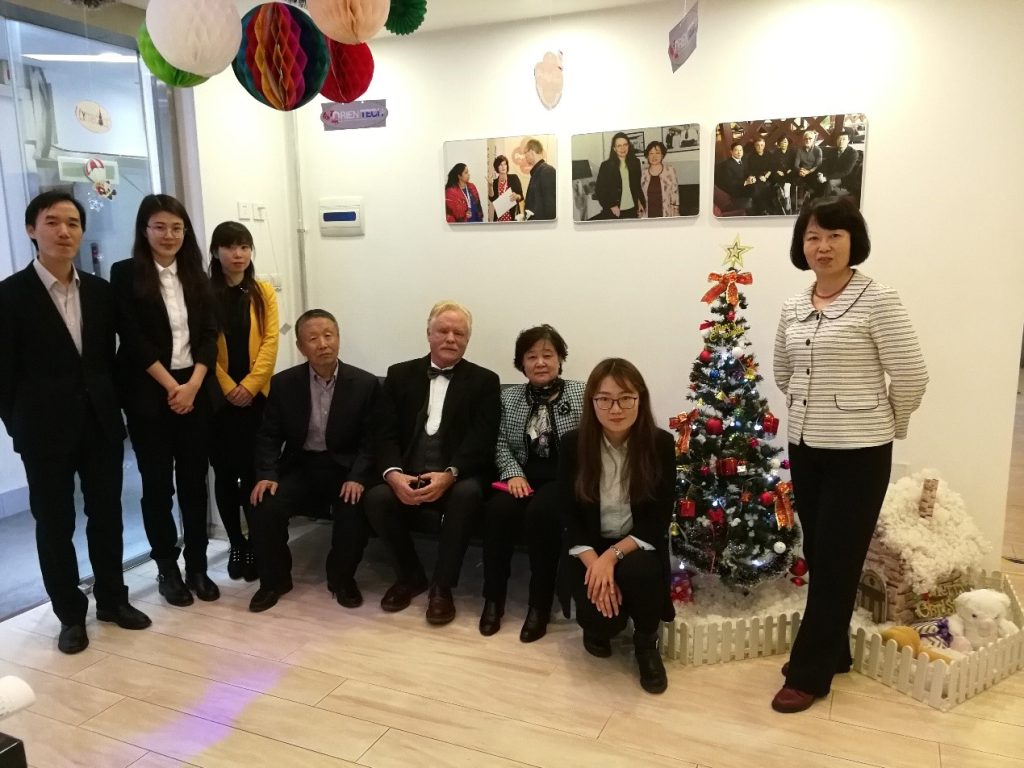
(from left to right: Qin (CFO), Kate, Liu Meijiao, Vice President Mr. Shang, Prof. Gorter, President Ms. Shuzhi Wang, Elaine, Vice President Ms. Lin)
December 27th, 2017:
Visit the Second Affiliated Hospital of Dalian Medical University
The Dalian Medical University (Chinese: 大连医科大学) is a leading university in Dalian, Liaoning, China under the provincial government. It was founded in 1947 in the southern part of Dalian city, China by Mao Zedong. In October 2007, it moved to the new campus in Lushunkou District, Dalian, which is across Lushun South Road from Dalian University of Foreign Languages’ new campus. The Second Affiliated Hospital is specialized in research in oncology and treating cancer patients in all stages. Hyperthermia is a major component of their treatment protocols.
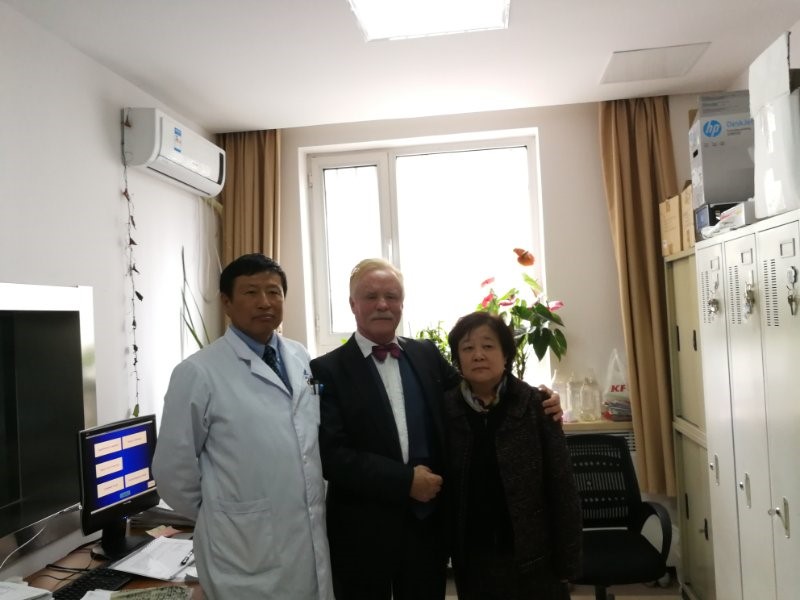
(From left to right: Prof. Zhang Yang of the Oncology Department, Prof. Gorter, Ms. Shuzhi Wang)
December 28th, 2018:
Visit the First Affiliated Hospital of Dalian Medical University
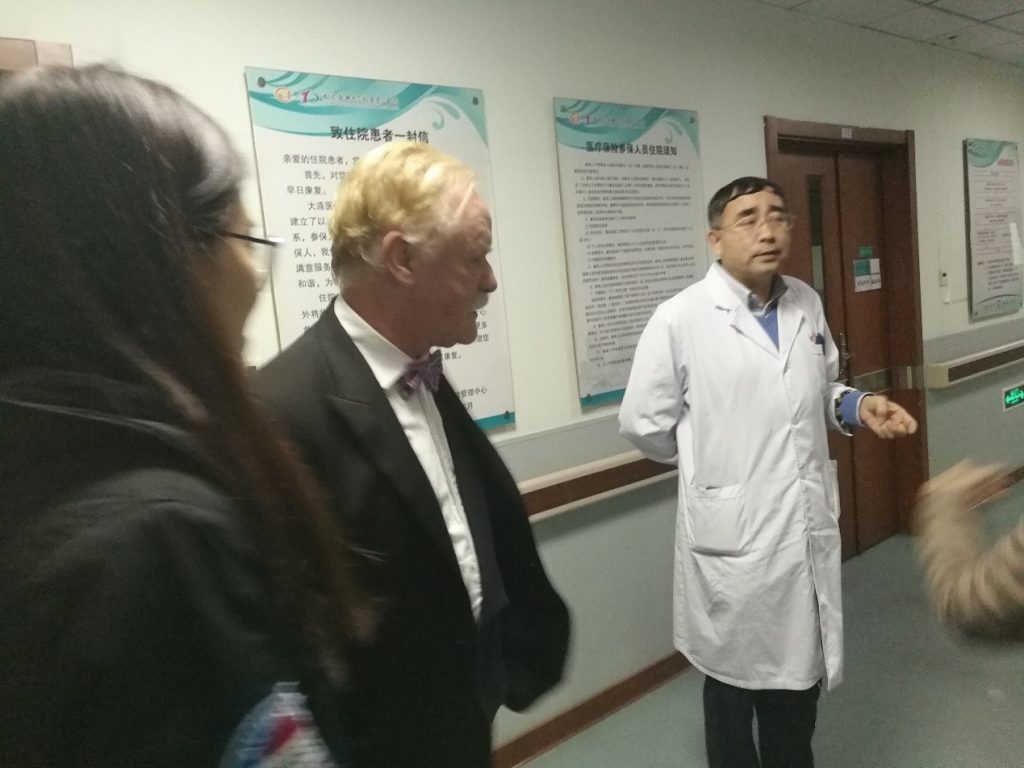
(Right: Director Professor Wang Yanfu at the special-needs wards)
December 29th, 2017:
Visit The First Affiliated Hospital of Zhengzhou University (old building)
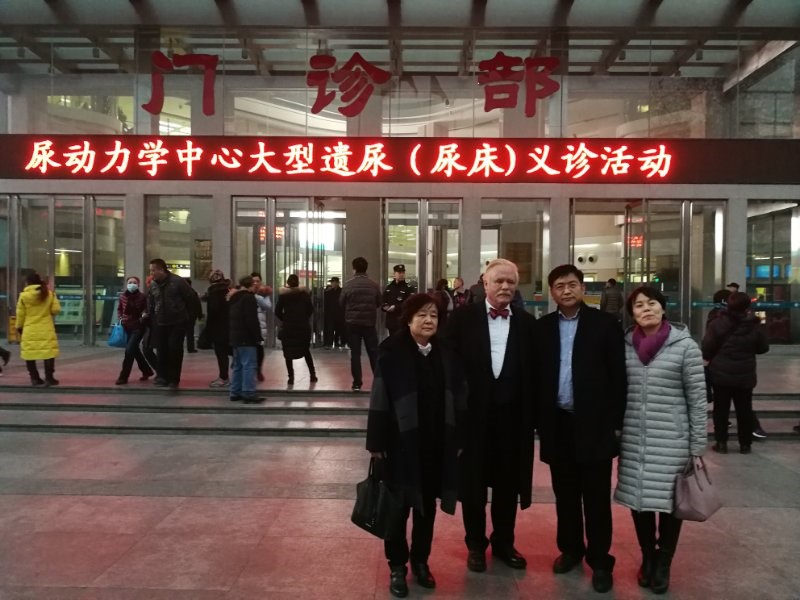
(From left to right: Ms. Shuzhi Wang, Prof. Robert Gorter, President Yang Daoke -director of a radiotherapy-, Prof. Zheng Yingjuan)
December 30th, 2017:
Visit The First Affiliated Hospital of Zhengzhou University (new building)
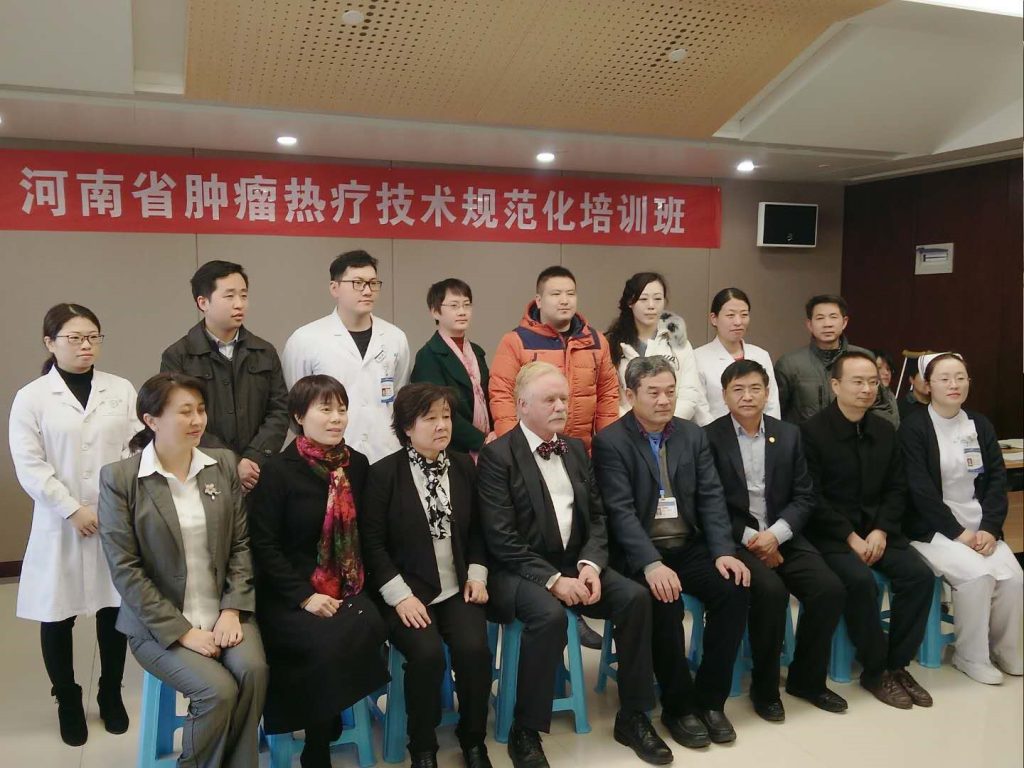
(First row from left to right: VP Ms. Dangmei Wu, Prof. Zheng, Ms. Shuzhi Wang, Prof. Robert Gorter, President Wang Jiaxiang, President Yang Daoke)
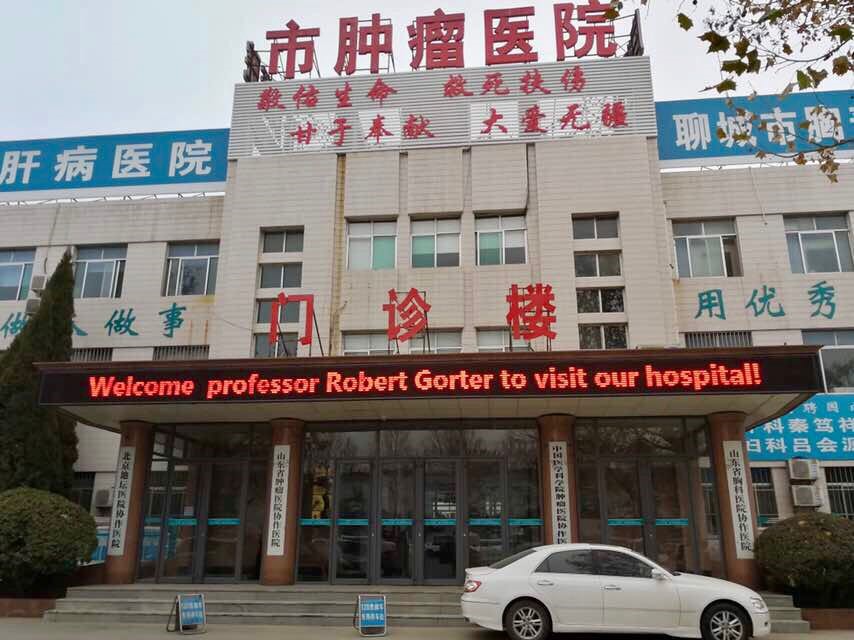
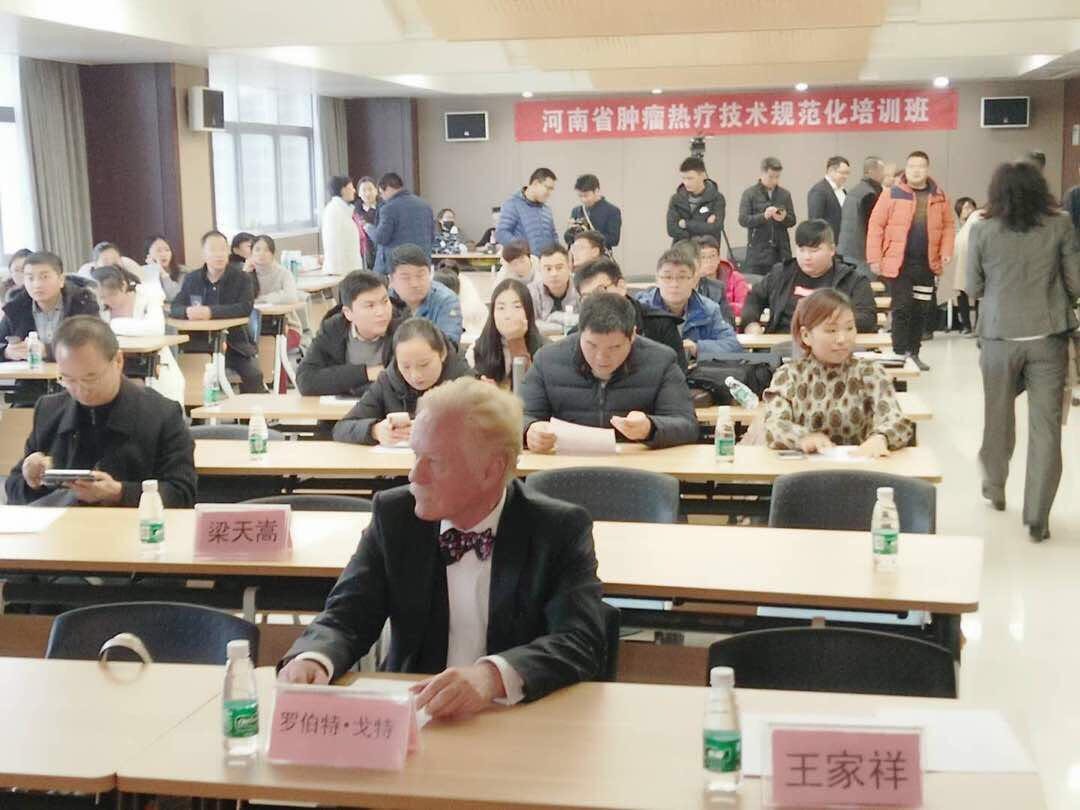
At the First Affiliated Hospital of Zhengzhou University Prof. Gorter, as a keynote speaker at the annual conference on oncologic hyperthermia, waiting for his time to offer his 45 minutes contribution.
December 31st, 2017:
The Sixteenth People’s Hospital of Zhengzhou
(From left to right: President Tian, President Liu, President Zhao, Director Bai of the 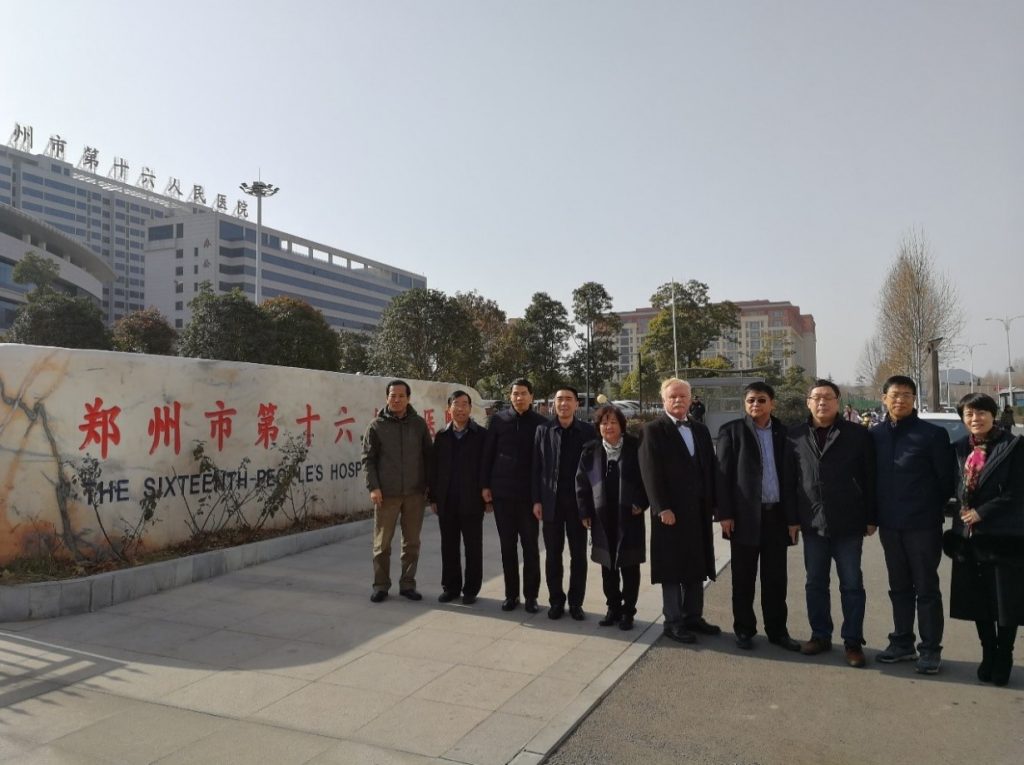 Oncology Department, Ms. Shuzhi Wang, Prof. Robert Gorter, President Yang)
Oncology Department, Ms. Shuzhi Wang, Prof. Robert Gorter, President Yang)
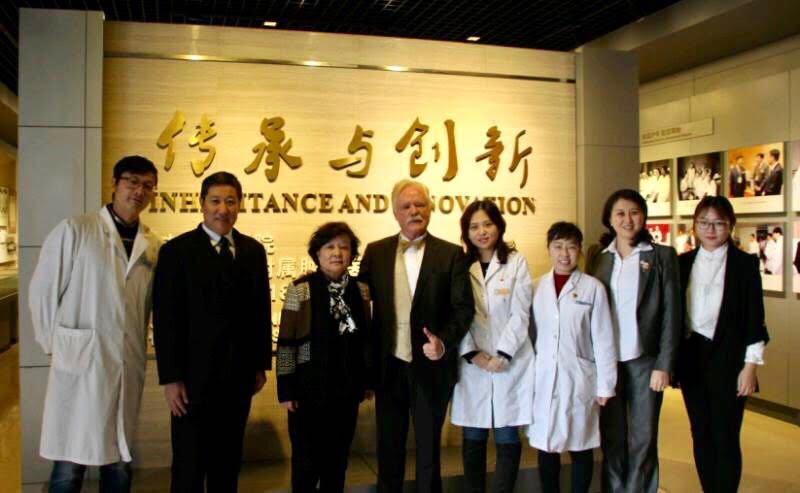
Prof. Robert Gorter is surrounded by very committed doctors and scientists who dedicated their lives to improving cancer therapy.
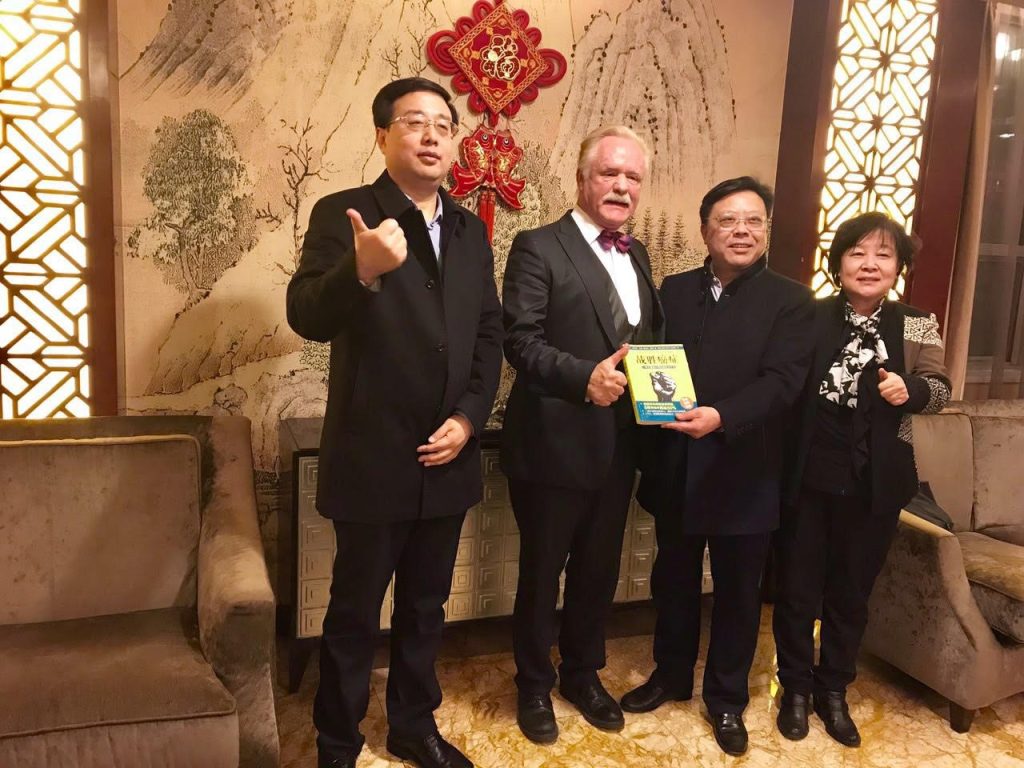
Everywhere Ms. Shuzhi Wang and Prof. Robert Gorter went they were warmly welcomed and with great interest in immunotherapy in the oncologic patient
January 2nd, 2018:
Liaocheng Cancer Hospital
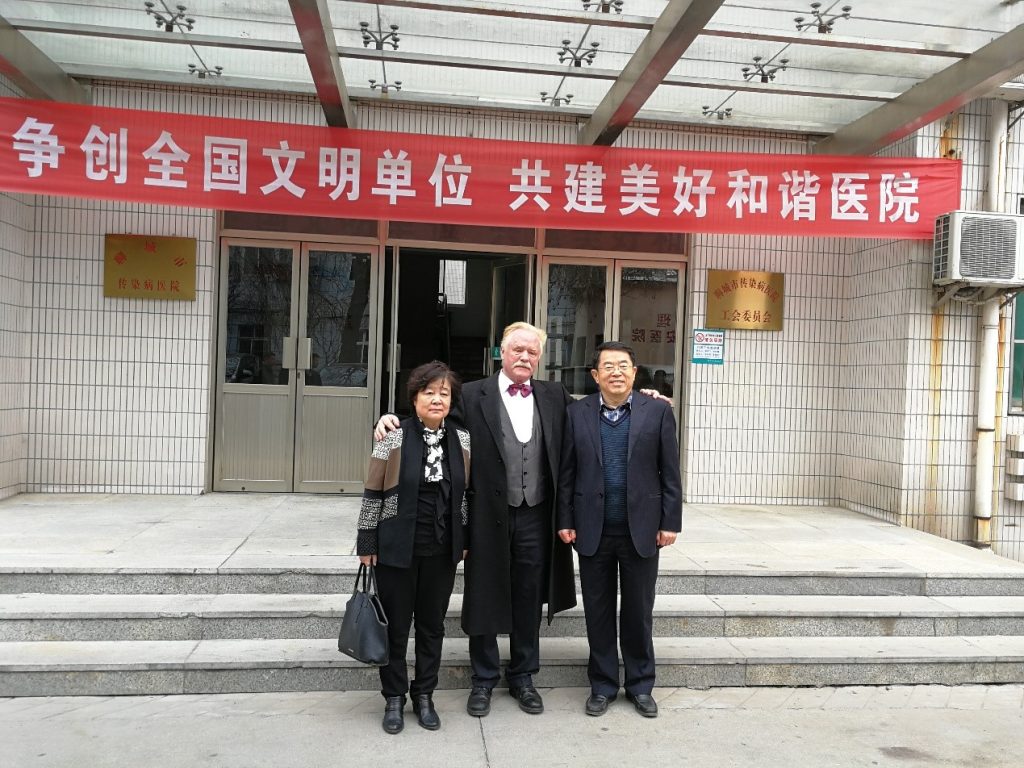
1.3 Central Hospital of Zibo
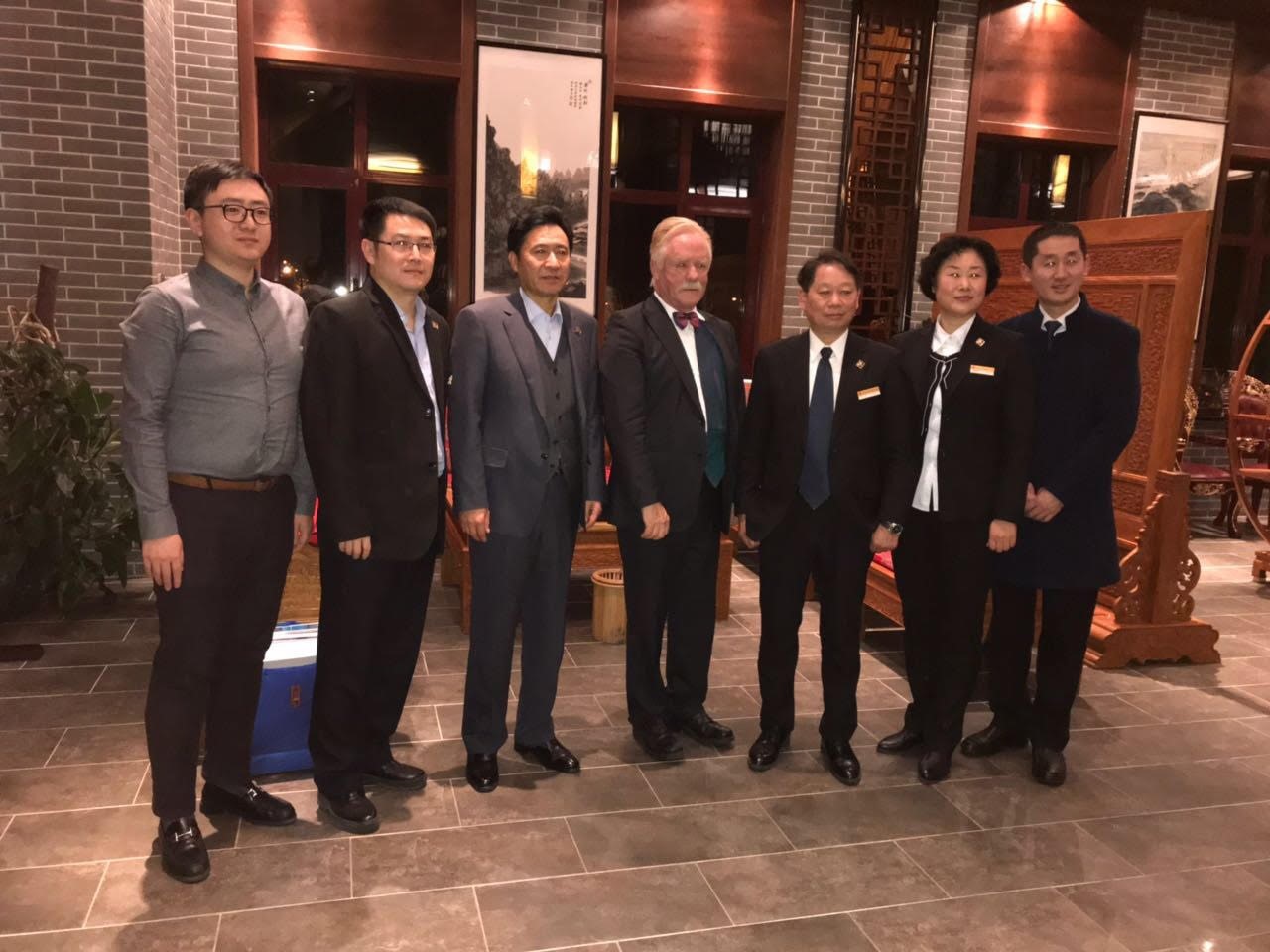
(Prof. Robert Gorter and President Li Tao)
January 4th, 2018:
Tianjin Medical University Cancer Institute & Hospital
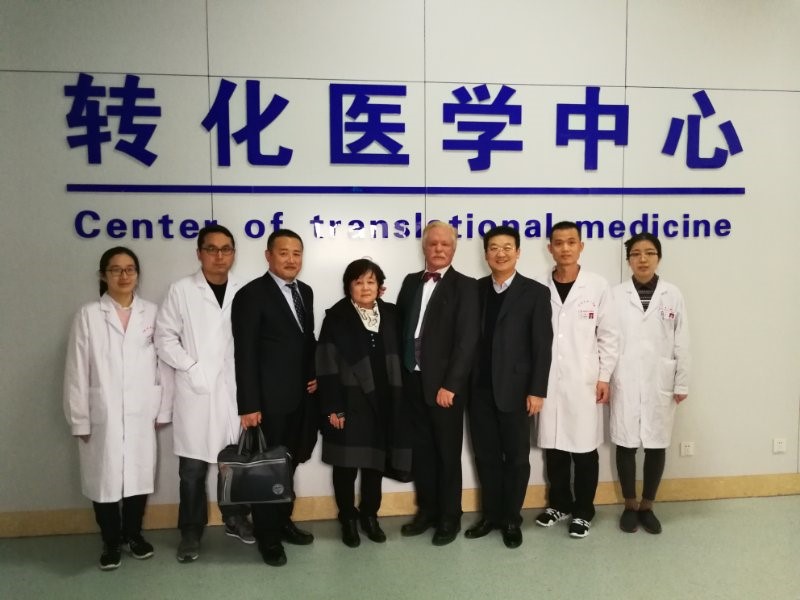
During one of his presentations, Prof. Gorter explained how important it is to know tumor escape mechanisms to develop new and rational cancer therapies
Consequent cancer therapy must include immune restoration as cancer is always caused by a deficiency of cellular immunity. Since 2000, the “Gorter Model” includes vaccinations with dendritic cells. In 2011, the Nobel Prize for Medicine was awarded for the discovery of dendritic cells and their function.
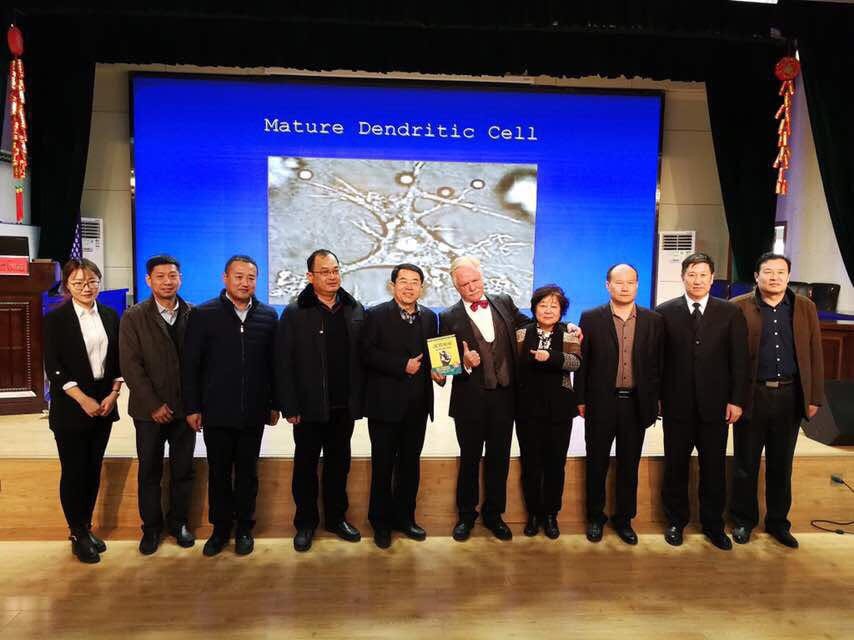
Right after a presentation on dendritic cells as part of the Gorter Model
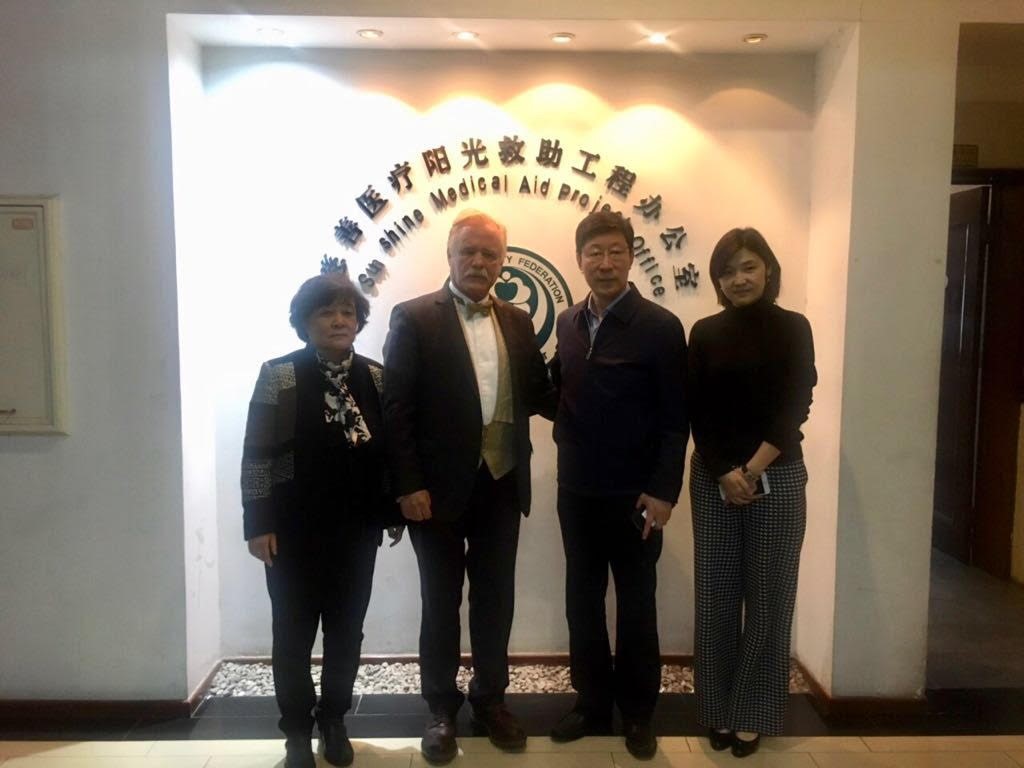
Also visited by Ms. Shuzhi Wang and Prof. Gorter was a Non-Profit Organization to support poor people in obtaining better cancer care by paying for their needed therapies.
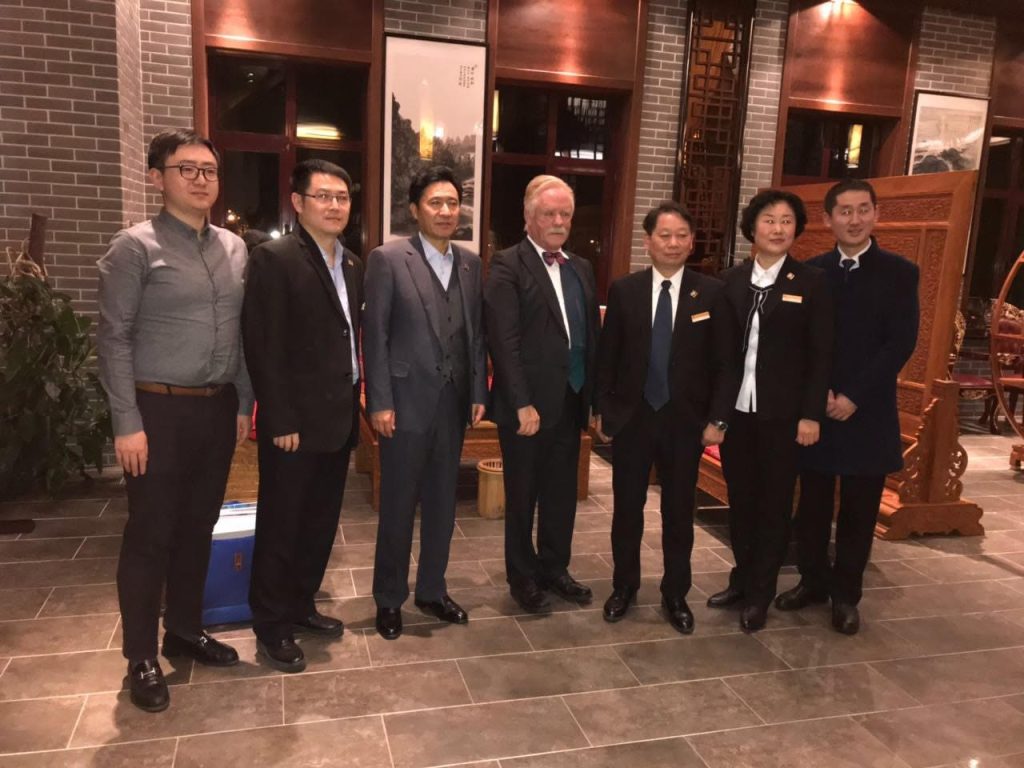
Prof. Gorter was also invited by a large company in Dalian to look at their far-advanced planning to build a new Health City where Translational Medicine would play an important role